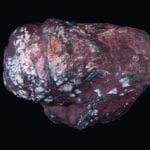 Weird Stuff
Weird Stuff  Weird Stuff
Weird Stuff  Our World
Our World 10 Ways Your Christmas Tree Is More Lit Than You Think
 Movies and TV
Movies and TV The 10 Coolest Stars to Set Sail on The Love Boat
 History
History 10 Things You Didn’t Know About the American National Anthem
 Technology
Technology Top 10 Everyday Tech Buzzwords That Hide a Darker Past
 Humans
Humans 10 Everyday Human Behaviors That Are Actually Survival Instincts
 Animals
Animals 10 Animals That Humiliated and Harmed Historical Leaders
 History
History 10 Most Influential Protests in Modern History
 Creepy
Creepy 10 More Representations of Death from Myth, Legend, and Folktale
 Technology
Technology 10 Scientific Breakthroughs of 2025 That’ll Change Everything
 Weird Stuff
Weird Stuff Ten Bizarre Facts About The Doge Meme
 Our World
Our World 10 Ways Your Christmas Tree Is More Lit Than You Think
 Movies and TV
Movies and TV The 10 Coolest Stars to Set Sail on The Love Boat
Who's Behind Listverse?

Jamie Frater
Head Editor
Jamie founded Listverse due to an insatiable desire to share fascinating, obscure, and bizarre facts. He has been a guest speaker on numerous national radio and television stations and is a five time published author.
More About Us History
History 10 Things You Didn’t Know About the American National Anthem
 Technology
Technology Top 10 Everyday Tech Buzzwords That Hide a Darker Past
 Humans
Humans 10 Everyday Human Behaviors That Are Actually Survival Instincts
 Animals
Animals 10 Animals That Humiliated and Harmed Historical Leaders
 History
History 10 Most Influential Protests in Modern History
 Creepy
Creepy 10 More Representations of Death from Myth, Legend, and Folktale
 Technology
Technology 10 Scientific Breakthroughs of 2025 That’ll Change Everything
Top 10 Unusual Facts Involving Chocolate
In one form or another, chocolate has been with mankind for centuries. The delectable snack has an unusual European history. First viewed with suspicion, chocolate became medicine and finally turned thousands into chocoholics.
This popularity hides the industry’s nasty side. A chocolate coating is a smuggler’s best friend, and companies sell dangerous products. In Japan, female workers are forced to hand out chocolates or face the consequences in their professional lives.
10 Chocolate’s Aroma Compounds

Chocolate’s butter, which essentially is fat, is loaded with 600 aroma molecules. Oddly, some smell nothing like the glorious treat. In fact, the aromas of several molecules are more like potato chips, cooked meat, and peaches.
When scientists studied the 600 chemicals, they discovered that chocolate makers only need 25 to create a delectable cocoa scent. This is important because the flavor people taste comes from their sense of smell. Once you pop a chocolate into your mouth, the butter melts and the molecules disperse within the oral and nasal passages.
Two things make it so tasty—the high-fat content and the slow release of the compounds. For this reason, those seeking to fully enjoy chocolate must savor it. When eaten too quickly, the chemicals fail to do their thing and a lot of the flavor is lost.[1]
9 The Surprising Power Of Packaging
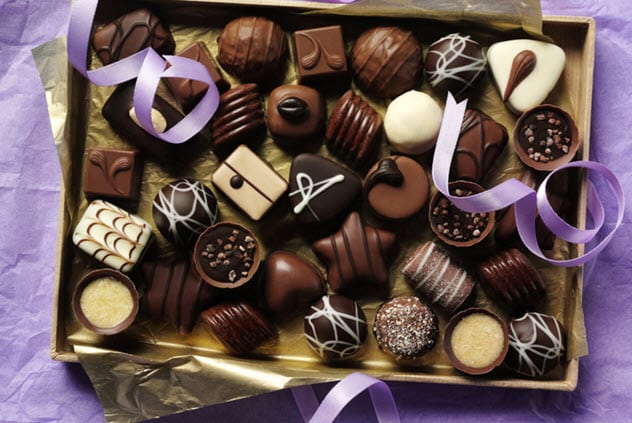
In 2019, a study required chocolate testers. A stampede of 75 people volunteered. They ate chocolates without seeing any wrappers. Then they looked at wrappers without doing any tasting. Finally, they enjoyed the treats with their packaging nearby. The last part came with six commercial themes: fun, bold, everyday, healthy, special, and premium.
With each package, the participants had to describe the feelings the product evoked as well as score the taste and the likelihood of buying it in the future. There was no difference among the chocolates themselves. However, the packaging had a surprising influence on the ratings.
Flavor scores dropped when the wrapping was absent or disappointing. The chocolate tasted better when the packaging was visible, carried positive words, or had extra bling. As it turned out, fancy wrappings created the strongest attraction and led to a higher chance that the volunteers would purchase it.
Although the taste was a big factor, the product’s looks were surprisingly powerful. The tasty experiment backed up other studies that found packaging was the deciding factor in nearly 60 percent of consumers’ decisions to buy or ignore a product.[2]
8 Origins Of The Mocha Frappuccino
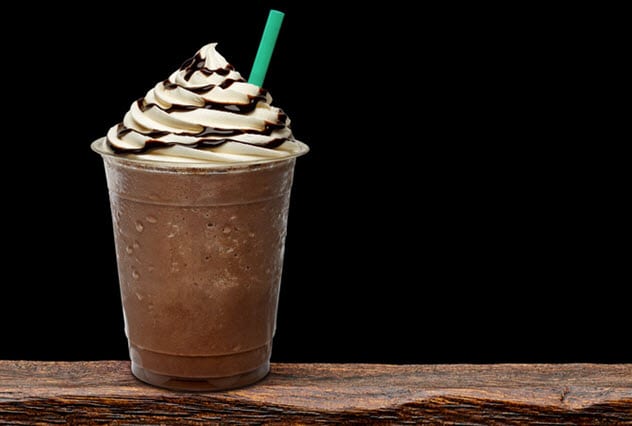
Bread lore credits the invention of the sandwich to John Montagu, the 4th Earl of Sandwich. When researchers dug around his family tree, they found that his great-great-grandfather could have sipped on the first mocha frappuccino.
In 2013, a 350-year-old recipe was found and the author was Sir Edward Montagu. He was an avid chocoholic during a time when England viewed the newly introduced concept of chocolate with suspicion.
When chocolate was first advertised in the 1600s, the public feared that the substance could cause problems like hemorrhoids and organ damage. The latter was blamed on iced chocolate concoctions.
Sir Edward liked his concoctions. His recipe called for the chocolate to be mixed with snow and salt, shaken in a flask until curdled, and then consumed with a spoon. It produced a drink similar to the iced chocolate made in coffee shops today.[3]
The earl believed the warnings. But he practiced what he thought was a countermeasure for the organ damage—to drink hot chocolate 15 minutes after the frozen snack.
7 Hot Chocolate’s Tastiest Colors
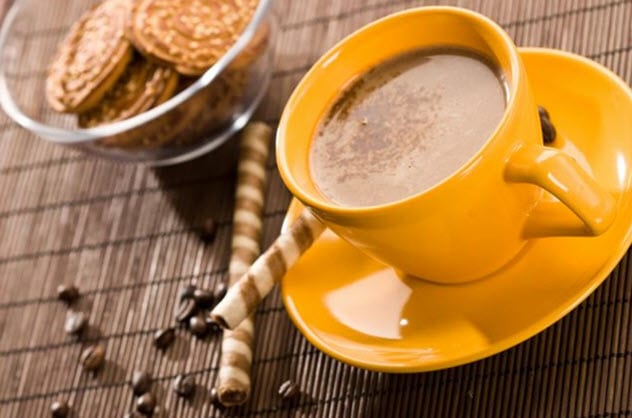
In the past, scientists discovered a curious fact about taste. Flavor in food is often affected by its price, verbal description, and the color of the plate.
In 2013, a study searched for any colors that might enhance hot chocolate’s flavor. The researchers gathered 57 volunteers and fed them cups of hot chocolate. All cups were white on the inside. But on the outside, they were either red, orange, white, or cream.
After every serving, the participants had to rate how much they enjoyed the drink. Nearly everyone agreed that the hot chocolate tasted better when drunk from a cream or orange cup.
This was a little mysterious. Volunteers were given an identical beverage to ensure that the hot chocolate itself remained constant. Nobody said that the drink was any sweeter or more aromatic. But for some reason, sipping from an orange or cream cup was just more flavorful.[4]
6 The Nobel Link
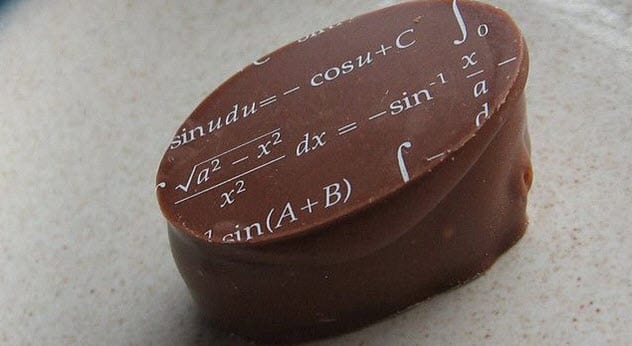
Chocolate consumption has several benefits. According to research, fans can look forward to glorious mouthfuls as well as a healthier heart, mind, and blood pressure. But an increased chance of winning the Nobel Prize?
In 2012, Dr. Franz Messerli published his study in The New England Journal of Medicine. Strangely, it claimed that hoovering up cocoa might boost the likelihood of winning the prestigious award. However, an individual person would not evolve into a genius after a single (or 50) chocolate bars.
Messerli looked at the big picture. He compared different countries, counting how much chocolate each consumed and how many Nobel laureates and winners they produced. Apparently, the higher the munchies, the more genius there was.
If you think it sounds ridiculous, you are in good company—Messerli agreed that the whole thing was ridiculous. Although his data was sound, it did not mean that his “link” between chocolate and Nobel Prizes was a real thing. He published it as real anyway to make a point about how connections made by science are not always correct.[5]
5 Chocolate Syrup Was A Medicine
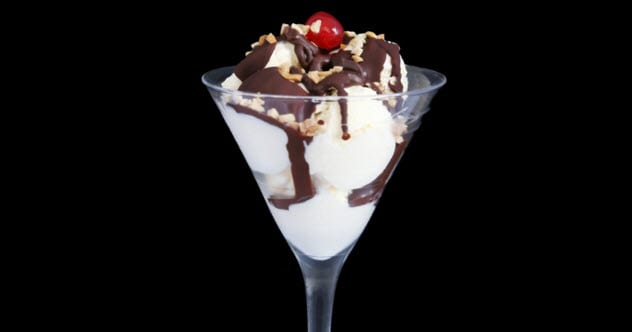
Any self-respecting sundae has syrup. Chances are excellent that patrons would choose chocolate syrup. It may be hard to imagine, but this sticky form of heaven did not start out as a treat.
The first customers were pharmacists in the 1800s. They purchased bitter cocoa powder from a company that remains known today—Hershey’s—and mixed the powder with large doses of sugar to make a thick syrup.
Chocolate was already a treatment for those suffering from wasting disease, but the syrup had another purpose. Remember, this was the 1800s. All remedies tasted like the inside of a shoe. When mixed with the syrup, difficult patients like kids readily accepted gross-tasting medicines.[6]
The syrup’s transition from the drug store to the kitchen hinged on the poverty of pharmacists. The industry was not yet profitable, and many sold snacks on the side, including sodas and ice cream. It did not take long for somebody to add chocolate syrup to these.
4 Chocolate-Coated Ivory
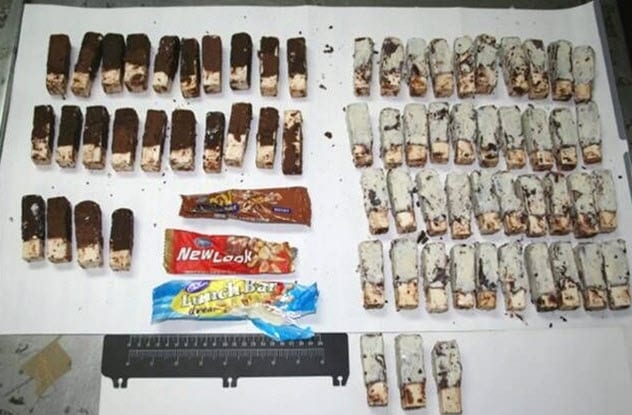
The ivory trade was banned in 1989, but the black market for elephant tusks never died. Based on the amount of confiscated ivory, around 50,000 elephants were poached in 2011.
Smugglers do bizarre things to move their loot across borders. In 2013, officials in Macau checked the luggage of two South Africans. They became suspicious when they found 583 chocolate bars. What raised the real red flag, however, was the weight of the treats. The stash weighed 34 kilograms (75 lb).[7]
The wrappers were removed, and the candy was dipped in warm water. The chocolate coating melted away and revealed ivory with a worth of more than $76,000. Disguising ivory as chocolate is creative, but this was not the first time. The previous year, over 90 ivory seals were found wrapped in chocolate packaging. They were destined for Taiwan from South Africa.
3 Giri Choco
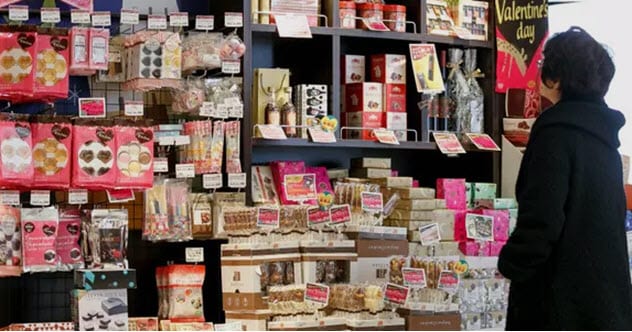
On Valentine’s Day, lovers present their sweethearts with chocolates. In Japan, things are different and it is getting on people’s nerves. Female nerves. There is a tradition called giri choco (“obligation chocolates”). Women are expected to give male coworkers the sweet treats on Valentine’s Day.
A woman must spend thousands of yen, struggle with what is appropriate, choose to whom to give the chocolates, and face possible backlash from those who did not receive any. Needless to say, this can lead to abusive situations in the workplace like harassment and unfair treatment. Several companies have now banned the practice.
During a 2019 survey, 60 percent of women said they would rather eat the chocolates themselves, over 56 percent said they would spoil family on Valentine’s Day with chocolates, and 36 percent planned to give some chocolates to men—but voluntarily and because it was either a romantic partner or a crush.
It seems that giri choco is not going to be around much longer. Only 35 percent of the women in the survey said they planned to hand out chocolates to male coworkers.[8]
2 Snortable Chocolate
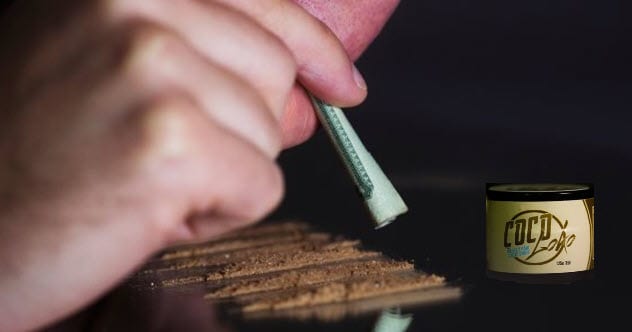
Novelty remains an excellent sales tactic. However, when a company started selling chocolate that customers could inhale, health experts became alarmed. In 2017, Legal Lean introduced the product in the United States. Called Coco Loko, it was a container with 10 “snorts” that cost around $24.99. The powder was advertised as a drug-free way to feel euphoric.
But its claims of instant energy and motivation did not win fans among medical specialists. Doctors felt that nothing—chocolate included—should be snorted without a very good reason.
Coco Loko’s potential to harm consumers has never been studied. As a powder consisting of raw cacao and energy drink ingredients like taurine and guarana, it could create problems inside the nose and lungs. The Food and Drug Administration never authenticated the product’s claims, either.
At least the company was honest about its products. On its website, a warning stated that Legal Lean products could hamper the “ability to drive a car or operate machinery” and “may cause health problems.”[9]
1 Nestle’s Child Labor
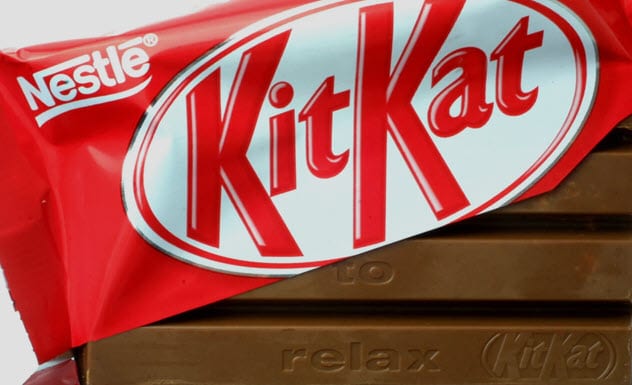
The chocolate giant Nestle has a big demon. For years, accusations of child labor dogged the company. One case involved kidnap victims who described how guards cut open the feet of any child who tried to escape the cocoa farms.
Facing pressure, the company commissioned the Fair Labor Association (FLA) to do annual audits in Ivory Coast, which remains the biggest supplier of cocoa in the world. In 2014, the FLA visited 260 farms supplying Nestle. The picture was not rosy.
There were 56 children under age 18, of which 27 were below 15 years old. Around 24 kids received no education because they had to work alongside their adult families. At least one child was forced to work with no pay.[10]
While the FLA ruled that Nestle had made a substantial effort to rectify the situation, it persisted because the farmers failed to implement the company’s ban on child labor. Human rights lawyers were less kind. They insist that Nestle cannot solve the complex problem—or does not want to—and that an independent authority must regulate the industry.
Read more fascinating facts about chocolate and chocolate candies on 10 Fascinating Facts About the World of Chocolate and 10 Fascinating Facts About M&M’S.






